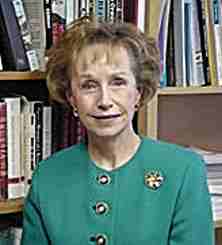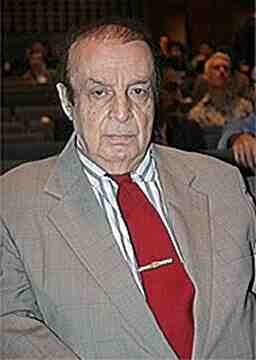|
|
(The quote for the above headline is more precisely: "Too much on
theory...too little on facts," from the first paragraph of the featured
article, below.)
What follows is an extraordinary review of a Vahakn Dadrian book. Ordinarily,
there should be nothing extraordinary about it; what we have is a professional
historian going about the real business of evaluating history. Where the
genocide world is concerned, however, conducting the business of history in an
honorable fashion has become a rarity, as most genuine historians have learned
to stay away from the hot potato "Armenian genocide" topic.
(Armenians and their genocide scholar allies are a dangerous people to get
mixed up with.) These days, however, a few are actually coming out of the
woodwork to call Vahakn Dadrian, "the foremost authority on the
Armenian genocide," for the lying and deceptive weasel that he is;
voices of dissent are even emerging from the ranks of the often unscrupulous
"genocide scholars." Back in the year 2000, when this review saw
print, the contesting of Dadrian's integrity was even more uncommon, and the
professor who wrote the review deserves much credit for her devotion to the
truth, and for her courage.
The professor is Mary Schaeffer Conroy, and her concentration appears
to be in the area of Russian history; she is from the University of Colorado,
in Denver. While preparing the page[s] on Silly Samantha Power's "A Problem from
Hell," I discovered that Professor Patricia Limerick, University of
Colorado in Boulder, served as a juror for this shamefully Pulitzer
Prize-winning book; in other words, Dr. Limerick seems to have gone out of her
way, along with two other jurors, to present the Power work to the selection
committee, telling them in effect that the book was especially worthy for
consideration. Now Dr. Limerick also appears to be a responsible historian
(her concentration: the American West), and there are signs she is a cut above
the rest (having received a "genius" grant or award); yet even such
a "non-partisan" historian's brain cells come to a halt, when this
genocide business surfaces. It was a low point for her career and reputation
not to have regarded Power's hateful, dishonest book as the propaganda that it
was, at least in regards to its first chapter on Armenians. This is the kind
of professor we look upon to serve as guardians against deception, but too
many not only go along for the ride, they actually go out of their way to
validate the racist propaganda of the Armenian genocide industry. Alarmingly,
too many "real" historians forget their commitment to the rules of
honest history, which is to put aside one's prejudices as much as humanly
possible, and to consider all relevant information; not just one side of a
story. Hopefully, one day Prof. Limerick will make up for her hurtful slip-up,
and look at this topic in a professional manner.
For all the harm that those as Prof. Limerick cause, thankfully, once in a
while, a pro like Professor Conroy can step up to the plate, and remind us all
how much we rely upon the academics of integrity to consider nothing but the
truth as their guiding force.
(Thanks to Hector.)
|
|
|
| "This book is more a work of journalism than solid history and is
not recommended." |
Warrant for Genocide: Key Elements of Turko-Armenian Conflict by Vahakn N. Dadrian
Reviewed by Mary Schaeffer Conroy
The Social Science Journal 37.3 (July 2000): p. 481
In 1985, in the center of Yerevan, the capital of Armenia, a large monument was dedicated
to those who perished in the massacres of 1915. The Armenian massacres of 1915 have the
same significance to Armenians as the Holocaust has to Jews. No one would question that
the cold-blooded murder of tens, perhaps hundreds, of thousands of Armenians is horrible
to contemplate. Indeed, the accusation of genocide against Turkish perpetrators is
extremely serious and demanding of careful examination, and, if proven to be valid,
deserving of widespread publicity and condemnation. This book, while including thoughtful
analysis on the possibility of the massacres and some interesting insights, relies too
much on theory and educated guesses and too little on facts or Turkish archival sources.
It thus does not allow satisfactory conclusions about the extent of the massacres or the
motivation and culpability of the Turks with regard to them.
The author's explanation for the periodic assaults on Armenians residing within the
Ottoman Empire and, in particular, the Armenian massacres of 1915 is that the Ottoman
political system, a theocracy based on Islamic law, was inherently antithetical to
democracy, pluralism and equality for non-Islamic subjects. Dadrian further believes that
Armenians were more discriminated against than other non-Islamic subjects within the
Ottoman Empire because, with the exception of a small group of Zeitoun highlanders, they
were not allowed to bear arms until some Armenian military units were used in the
Russo-Turkish War of 1877-1878. On a wider scale, Armenians could not bear arms until
universal conscription was instituted in 1909. Dadrian also states that during the second
half of the nineteenth and early twentieth centuries Ottoman government officials moved
away from the mind set of "Ottomanism," whereby non-Islamic citizens were
tolerated if not equal to Islamic citizens. They then adopted a concept of
"Turkism," which considered non-Turks as harmful to the integrity and cultural
homogeneity of the state. Under this policy Armenians were more vulnerable than other
non-Islamic citizens of the Ottoman Empire because they had no protectors among the Great
Powers. Unfortunately, these contentions are not adequately supported by Dadrian and some
facts are erroneous.
Indisputably, from its inception the Ottoman Empire relegated non-Christians to
second-class status. This having been said, Dadrian does not put the Ottoman Empire within
the context of other nineteenth-century empires, such as the proximate Russian Empire,
which carried on vendettas against various border nationalities (sometimes because of
their revolutionary activities) and the British Empire, which also relegated non-Anglicans
to the status of second-class citizens. Additionally, although Dadrian alludes to reforms
implemented in the Ottoman Empire he tends to ignore or downplay positive developments
within the Empire.
|
"Dadrian does not identify the Huntchaks ... nor the Dashnaks"
|
 |
|
Dr.
Mary Schaeffer Conroy
|
During the nineteenth century in the Balkans,
an educated and prosperous middle class emerged among disparate Christian citizens
— Serbs, Bulgarians, and Greeks — and Romanian tributary subjects of the Ottoman
Empire. Pressure from these elites, in conjunction with internal weaknesses in the
Empire such as the fractiousness of the janissary corps and local governors, lack of
economic competitiveness, Ottoman defeats by Russia, admonitions from the Great
Powers, and enlightened thinking on the part of Ottoman bureaucrats led to a series
of reforms and the gradual establishment of independent states for non-Turkish
peoples. This included the Greeks, Romanians, Serbians, Montenegrins, Bulgarians,
and finally, in 1913, Albanians. Dadrian claims that Armenians were more oppressed
than these groups because they were not allowed to bear arms and had no outside
protectors. Furthermore, the Ottoman government allowed Kurds and Islamic migrants
from the Balkans and the Caucasus to harass Armenians. His argument, however, is
marred by inconsistency and ambiguity. He notes, for instance, the appointment of
Armenians to central and local government posts in 1876, periodically refers to the
Armenian diaspora, and admits that Armenian merchants, upper echelons of the
Armenian clergy and "conservative" Armenians preferred Ottoman rule to
Russian (Russia ruled a slice of Armenia following the 1827-1828 Russo-Turkish War)
because they believed this would better preserve Armenian identity. Indeed, Armenian
deputies in the Ottoman Parliament spoke out against Russia. The author tells us
nothing, however, about the conditions within the Ottoman Empire which produced the
Armenian elites, nor does he elaborate on these issues. Similarly, Dadrian mentions
Armenian revolutionaries, the Huntchaks and the Dashnaks, some of whom engaged in
raids on the Ottoman Bank in the mid-1890s, and he concedes that their numbers were
small and that the bulk of Armenians repudiated them. However, he does not develop
the impact these revolutionaries may have had on Ottoman government policies,
particularly the reluctance to let Armenians bear arms. Further, Dadrian does not
identify the Huntchaks as Marxists nor the Dashnaks as extreme nationalists. In
chapter 10 Dadrian informs us that several thousand Armenians fought for Turkey in
World War I but, again, does not develop this theme.
|
| "...Misrepresents some easily verifiable facts." |
 |
|
Dr. Vahakn Dadrian |
The book misrepresents some easily verifiable facts. For example,
Dadrian asserts that Serbia, Bulgaria, Montenegro, and Macedonian Bulgars fought Turkey in
the First Balkan War of 1912 to avenge Turkish atrocities in Macedonia. This may be true
in part, but such authorities on Balkan history as Charles and Barbara Jelavich attribute
the war to the desire for Macedonian territory on the part of Serbia, Bulgaria,
Montenegro, and Greece. Squabbles over the acquired territory in fact precipitated a
Second Balkan War in 1913 between Bulgaria, on the one hand, and Serbia and Greece, on the
other. More controversial is Dadrian's claims that the "desire to extricate
themselves from the grip of the Armenian reform shackle had influenced the Turks' decision
and their timing to intervene in World War I on the side of Germany" (p. 125).
Dadrian considers the massacres of thousands of Armenians between 1894 and 1896 as a test
case for the Turks of their expendability. In 1910 and subsequently, Turkish Ittihadist
leaders secretly decided to liquidate Armenians in order to homogenize the state. The
Ottoman Government encouraged migration of Moslem refugees from the Balkans and
gerrymandered provinces to isolate Armenians, then "mercilessly slaughtered
them" during World War I. The book provides meager details about the massacres,
however. Even the number of Armenians killed remains vague. In chapter 10 the author
alludes to the slaughter of 80,000 to 90,000 Armenians in "100 or so villages."
In 1919 approximately 300,000 Armenians may have been killed in Van and Bitlis provinces.
Although Dadrian appears fluent in Turkish and cites certain Turkish sources — dissident
Ittihadist reports, memoirs of a few Turkish leaders, and statements from a post-World War
I war-crimes tribunal — almost no information on Turkish government policies regarding
Armenians and nothing on the decision to annihilate them comes from Turkish archival
sources. Dadrian relies mainly on British Foreign Office and German, Austrian, and French
reports. When discussing how the Turks unleashed Kurds to attack Armenians in the
mid-1890s, Dadrian even quotes a U.S. senator's castigation of this event as supporting
evidence. Similarly, he cites the Russian newspaper Golos moskvy (incorrectly
transliterated "Kolos Moskoy") as one of the sources for a "secret Turko-German
plan for the massive deportation of the Armenians of eastern Turkey" along with a
Western historian's ruminations on how important cultural homogeneity was to the Turks, as
proof of the Armenian massacres of 1915. Dadrian's excuse for not documenting Turkish
policies with internal governmental sources is that the policies were secret. However,
since much evidence exists in Russian archives about secret policies, one cannot but be
skeptical about this explanation.
|
"Failure
to use Turkish archival sources"
|
A few typos and small factual errors, such as the implication that Russian-Ottoman
relations were always adversarial in the nineteenth and early twentieth centuries,
mar the book. However, the most egregious flaws in this book are its polemical tone,
its sketchiness, and its failure to use Turkish archival sources. Therefore, while
the book delivers intriguing insights into Ottoman-Kurdish relations and the views
of individual Turkish statesmen regarding Armenians, and while it suggests
convincing theories for Turkish massacres of Armenians, it does not convincingly
document these theories. It is thus unsatisfying as a whole. This book is more a
work of journalism than solid history and is not recommended.
|
| |
Other looks at Dadrian mischief:
Who
Did Hitler Follow?
Dr. Malcolm Yapp's Review of Dadrian's
Genocide History
Guenter Lewy Responds to Vahakn Dadrian
Vahakn Dadrian
BUSTED: Halil Pasha
|
|